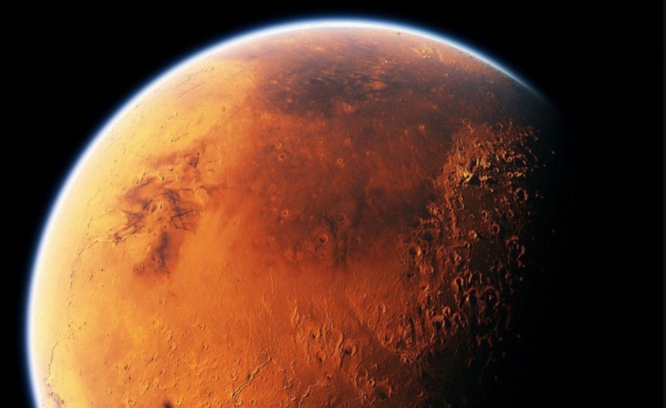China’s fully robotic rover on Mars has discovered for the first time traces of recent water activity, indicating that there are a few regions on Mars where conditions are favorable for life.
According to a paper published in the journal Science Advances, the Zhurong rover, which landed on Mars in 2021, detected evidence of liquid water on sand dunes at low latitudes, i.e. closer to the planet’s equator and farther from its extremes.
In their study, Chinese researchers noted that scientists have believed for a long time that Mars once had a climate similar to Earth and an ocean flowing over its surface approximately three billion years ago. Scientists believe that the majority of the ice was likely confined in the crust of the planet as a result of dramatic climate changes. To date, no evidence has been presented that liquid water exists at low latitudes on the Red Planet.

The latest research has advanced Mars’ evolutionary past
The Zhurong rover did not directly detect any water in the form of frost or ice, but it did observe salt-rich dunes with fissures and crusts. The rover discovered fractured layers on minuscule Martian dunes for the first time, indicating that the Red Planet was a salty, wet world as recently as 400,000 years ago, according to the study.
Since temperatures on Mars fluctuate wildly and rise in the mornings, the saltwater evaporated, leaving behind salt and other newly formed minerals that later seeped between the sand grains of the dune, cementing them together to form a crust.

Professor Qin Xiaoguang of the Chinese Academy of Sciences (CAS) said, “This is important for understanding the evolutionary history of the Martian climate, looking for a habitable environment, and providing key clues for the future search for life.”
The team stated that they utilized data from the Navigation and Terrain Camera, Multispectral Camera, and Mars Surface Composition Detector of the robotic rover. They discovered that the dune’s surface layer was abundant in hydrated sulfates, hydrated silica, iron oxide minerals, and perhaps chlorides.
“According to meteorological data measured by Zhurong and other Mars rovers, we inferred that these dune surface characteristics were related to the involvement of liquid saline water formed by the subsequent melting of frost/snow falling on salt-containing dune surfaces when cooling occurs,” said Mr. Qin.

